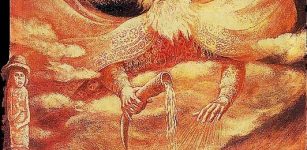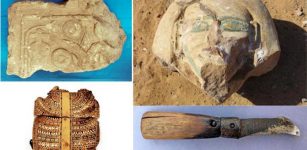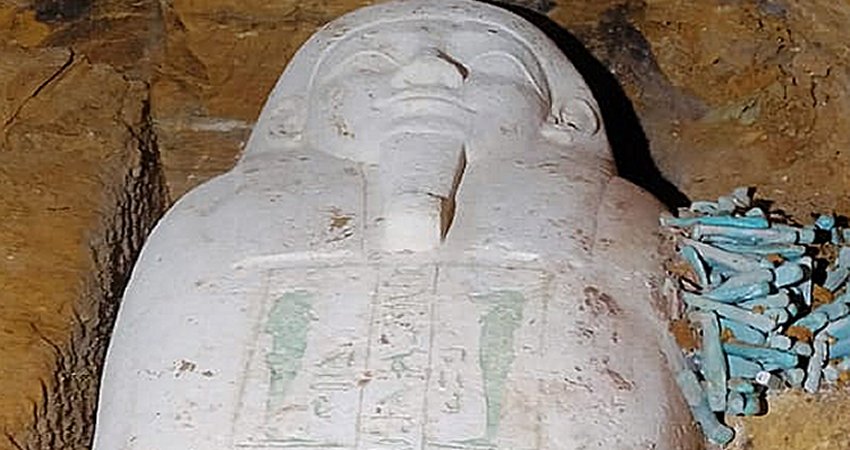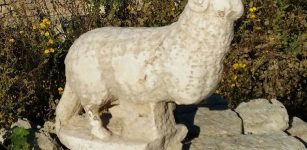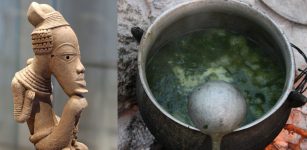Wayland The Smith: Legendary Master Blacksmith And Lord Of The Elves
MessageToEagle.com – A legendary master blacksmith Wayland the Smith has different names in the folklore of many other cultures; in French, he is Galand, in German folklore, this prominent figure is known as Wieland, in Norse mythology the smith is called Volund.
This beautiful bronze Viking artifact depicts a legendary master blacksmith – Wayland the Smith wearing his cloak of feathers and flying.
According to some legends, Wayland, a son of a giant Badi and grandson of a mermaid, was also King of the Elves and his wife was Alvit, one of the Valkyrs.
He served as an apprentice to the wise craftsman Mimir, a sea giant, one of the descendants of the first gods, who formed the oldest trinity.
See also:
Legendary Beowulf: Strong And Courageous Prince Of Geats Fighting Grendel And Dragon Monsters
Mysterious And Powerful Valkyries In Norse Mythology: The Choosers Of The Slain
Norse Legend Of Hero Sigmund And The Magical Sword In The Branstock Tree
Fascinating Myths And Legends From All Across The World
 Wayland was a clever smith. He used his supernatural skills to make weapons, which no blow could break, magical items and manufactured the most elegant ornaments of gold and silver.
Wayland was a clever smith. He used his supernatural skills to make weapons, which no blow could break, magical items and manufactured the most elegant ornaments of gold and silver.
The story of Wayland is told in the ‘Völundarkvida’, one of the poems in the 13th-century Icelandic ‘Poetic Edda’ (also known as the Elder Edda), a collection of very Old Norse poems mainly preserved in the Icelandic mediaeval manuscript ’Codex Regius’.
According to Völundarkvida’, King Nidud, an evil king of Sweden, surprised Wayland in his sleep; he bound him and made a prisoner, forcing the smith to work for him.
To prevent Wayland from escaping, Nidud cut the tendons in his feet, making him lame.
He took possession of his sword, a formidable weapon with magic powers, and the love ring made of pure Rhine gold, which he gave to his only daughter, Bodvild. He placed Wayland on a remote island but Wayland took a very cruel revenge on Nidud by killing his two young sons and raping his daughter.
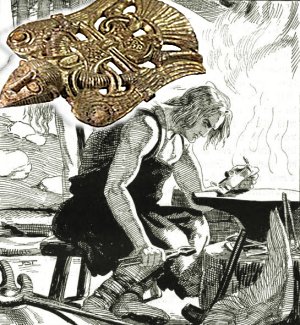 He crafted gold and jewel-studded drinking bowls from the boys’ skulls and sent them to the king.
He crafted gold and jewel-studded drinking bowls from the boys’ skulls and sent them to the king.
The smith escaped his island prison by flying away on magical wings (or in some versions a feathered robe), which he had crafted for himself.
He went to Alf-heim (Old Norse: Álfheimr, “Land Of The Fairies”), where he found his beloved wife Alvit.
He continued to work as smith, forging wonderful weapons such as the swords Miming for his son Heime, the precious sword Balmung for Sigmund, a Volsung hero, and many other precious magic weapons.
The legendary Wayland is figured prominently in the mid-13th-century Icelandic prose ‘Thidriks saga’, in ‘Beowulf’, and in the Anglo-Saxon and German poems. poems.
Wayland the Smith resembles the Roman god Vulcan, who was also a clever smith and could use his talents to work out his revenge. Vulcan, lamed by a fall from Olympus, and neglected by Juno, whom he had tried to befriend, sends her a magic golden throne that could seize and hold her fast.
Copyright © MessageToEagle.com All rights reserved. This material may not be published, broadcast, rewritten or redistributed in whole or part without the express written permission of MessageToEagle.com


